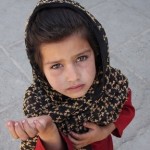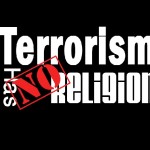By: Agha Ahmed Gul
A document that, if it were for the benefit of the Jews, would have been translated into all the languages of the world, and all people would have heard of it.
I bet that 99% of Muslims in general, and Arabs in particular, have not heard of it. What most Arabs and Muslims do not know is that there was an international court decision 93 years ago during the British Mandate of Palestine, when Muslims and Jews litigated over the issue of Jerusalem and the Al-Aqsa Mosque:
Is it true? For Muslims, or is it the alleged temple of Solomon – peace be upon him – which is a historical right for the Jews?! So, what did the European arbitrators, impartial judges, lawyers, and international historians and archaeologists, when there was not a single Arab or Muslim among them, say about the Al-Aqsa Mosque and the ancient western wall of the Al-Aqsa Mosque?
Is it the Wailing Wall, and is it a right for the Jews, or is it the Buraq Wall, which is a right and property for Muslims?! What was the decision of that international committee?!
During the British mandate over Palestine… (The Buraq Revolt broke out in 1929 against the British colonialists) in protest against the facilities provided by the British to the Jews to arrive and pray at the western wall of Al-Aqsa Mosque. The revolution never subsided, until the British agreed to refer the dispute to an international court to decide on the issue: is the wall the Islamic Buraq Wall, or is it the Jewish Wailing Wall?
On September 13, 1929, the British Colonial Secretary appointed a committee known as the Shaw Commission to investigate the immediate causes of the uprising and develop measures to prevent its recurrence. Among its recommendations was to determine rights and claims to avoid the occurrence of other uprisings. The British government proposed that the Council of the League of Nations Form a committee for this purpose, as the League Council approved on May 15, 1930 AD its formation, headed by the former Minister of Foreign Affairs in the Government of Sweden as Chairman, and the membership of the Vice-President of the Court of Justice in Geneva, the President of the Mixed Austro-Romanian Court of Arbitration, the former Governor of the eastern coast of the island of Sumatra, and a member of the Parliament of the Netherlands.
An impartial international committee at the highest judicial and arbitration level. The committee arrived in Jerusalem on June 19, 1930, where it stayed (for a full month) in Palestine, and every day it held one or two sessions. During the 23 sessions held by the committee, it heard the testimony of 52 witnesses. , including 21 Jewish rabbis, 30 Muslim scholars, and one British witness.
The two parties submitted to the committee 61 documents, including thirty-five documents submitted by Jews, and twenty-six documents submitted by Muslims.
Delegations from all over the Islamic world flocked to Jerusalem to defend the cause and declare Muslims’ adherence to ownership of the wall. Ahmed Zaki, Muhammad Ali Allouba, and Muhammad al-Ghunaimi al-Taftazani traveled from Egypt, Muzahim al-Bajhiji from Iraq, Salah al-Din Bayhum from Lebanon, Mirza Mahdi from Iran, and Sayyid Abdul Ghafour from Afghanistan.
And from Indonesia, Abu Bakr Al-Ash’ari and Abdul-Qahar Mudhakir, from India Abdullah Baha’i and Sheikh Abdul-Ali, and from Poland with its Mufti Dr. Ya’qub Šenkowitz… in addition to a number of prominent Palestinian figures: Awni Abdul-Hadi, Amin Al-Tamimi, Amin Abdul-Hadi, Jamal Al-Husseini, Muhammad Izzat Darwaza, Raghib Al-Dajjani and Sheikh Hassan Abu Al-Saud, in addition to other personalities participated from Marrakesh, Algeria, Tripoli, Morocco, Syria, and eastern Jordan.
It was proven to the International Court that (the Muslims’ argument was dominant), as their defense was able to prove that the entire area surrounding the wall is an Islamic endowment according to the documents and records of the Sharia Court and that the texts of the Qur’an and the traditions of Islam clearly state the sanctity of the place to them.
And that the Jews’ visit to the Wall was not their right, but rather it was a specific grant under (the orders of the Ottoman Empire) and under (the orders of the Egyptian rule of the Levant), and it was only a response to repeated requests to visit the place (and without allowing them to perform prayer rituals in this place), and it is sufficient to pray without No sound, no disturbance, no seating facilities or curtains… This was a grant from Muslim governments as a form of religious tolerance (and not a historical, religious, or real estate right)!
The court’s decision came more than five months after the start of the International Committee’s sessions in Jerusalem, and after it listened to Arab Muslim and Jewish representatives, reviewed all the documents submitted by the two parties, and visited all the holy places in Palestine, and the committee held its final session in Paris on the 28th. November to December 1, 1930 AD, when the committee unanimously reached its decision, which it began with the following paragraph, which is what concerns us as Muslims:
“Ownership of the Western Wall belongs to Muslims alone, and they alone have the real right to it because it constitutes an integral part of the area of the Noble Sanctuary, which is part of the endowment property. Muslims also own ownership of the sidewalk located in front of the wall and in front of the area known as Al-Magharibi Quarter opposite the wall, because it is endowment according to the provisions of Islamic law.” For the directions of righteousness and goodness.”
It also stipulated: “The tools of worship and other tools that Jews bring and place near the wall may not, under any circumstances, be considered or have the effect of creating any real right for the Jews to the wall or to the sidewalk adjacent to it.”
The decision included a number of other points, the most important of which were: “Prohibiting bringing seats, symbols, mats, chairs, curtains, barriers, and tents, and not allowing Jews to blow the trumpet near the wall.”…
The provisions of this order were put into effect on June 8, 1931, and the British government issued a white paper on the subject that recognized Muslim ownership of the place and their disposition of it. Both the international ruling and the White Paper forced the Jews to adhere to their borders, and soon the Jewish voices apparently faded regarding the issue of the wall.
On the basis of that, the King of Britain also issued a royal decree known as the “Western Wall Decree of 1931”, which was published at the time. In the Official Gazette of Palestine.






